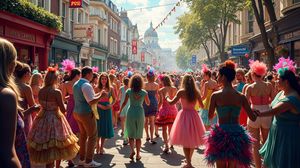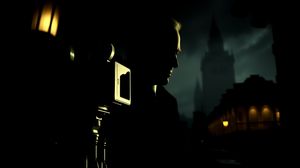
Agatha Christie's Blue Plaque at Sheffield Terrace in Kensington commemorates one of the most prolific and beloved authors in the crime fiction genre. The historical marker honors the years that Christie spent living in London, a city that inspired much of her work. It's a must-see spot for fans of the "Queen of Crime" who wish to trace her footsteps and explore connections to her tales of mystery and intrigue.
The property at Sheffield Terrace served as Agatha Christie's home during a particularly creative period of her life. It's fascinating to think that from here, Christie penned numerous renowned novels that captivated readers worldwide. This residence stands as a testament to her enduring legacy and influence in the world of literature.
Agatha Christie's association with Kensington offers a unique glimpse into the daily life of this iconic author. It's intriguing to imagine Christie, the famous creator of Hercule Poirot and Miss Marple, walking these very streets and drawing scenes for her famously twisted plots. This context adds a tangible layer to her enchanting stories, bridging fiction and reality.
Dedicated to marking Christie's connection to her London home, the plaque was installed as part of the English Heritage scheme, which ensures the preservation and recognition of significant sites across the nation. It's an excellent way for visitors to pay homage to her literary brilliance while reflecting on the historical impact of her work.
Visiting the plaque offers a slice of history and a physical connection to the woman who mastered the art of the whodunit. For anyone fascinated by classic detective novels, standing in front of this blue plaque might feel like closing a chapter in their own mystery-loving journey, allowing them to picture the life behind the tales they've read.
Agatha Christie's time at Sheffield Terrace was marked by the publication of numerous notable works, making it a place of historical and literary significance. Her ability to weave complex plots with engaging characters has earned her countless accolades, and visiting her former residence provides fans with a profound connection to her legacy.

Making the Most of Your Visit:
Start your visit by imagining the creative energy buzzing at Sheffield Terrace. Stand still for a moment to picture Agatha Christie wandering these streets, her mind brewing the plots and characters that would captivate the world. It's a lovely way to bring her stories to life and honor her legacy as you gaze at her blue plaque.
If you're a super fan, bring along a copy of one of her novels. Read a chapter across the street from her house to gain inspiration from the apparent ordinary world she turned into extraordinary mystery settings. It can be a surreal experience, adding to the connection you feel to her work.
Consider timing your visit during the quieter parts of the day. Early mornings or later afternoons can offer a more peaceful atmosphere, allowing you to really soak in the historical and literary ambiance without the hubbub of daily foot traffic.
Take a leisurely stroll down Kensington's charming streets and keep an eye out for other fascinating sites. While wandering, try spotting subtle architectural details or plaques along the way—who knows, you might stumble onto another snippet of history that adds to your day.
And for a truly unique keepsake, take a thoughtful snapshot of the plaque with Christie's spirit in mind. Maybe include a classic detective accessory like a magnifying glass, or coordinate it with a vintage-style outfit. It'll make for a fun memento that captures the theme of your visit.

Visiting Times & Costs:
Agatha Christie's Blue Plaque in Kensington is a publicly accessible site as it is located on the exterior of a private residence. Blue plaques are intended for public appreciation and are typically visible from the street. Therefore, there is no entrance fee to view the plaque itself, and it is available to visit at any time.
Since the plaque is located on a residential street, there are no specific opening times, but it is recommended to visit during daylight hours for better visibility and to respect the private nature of the area.
Regarding accessibility, the street is generally accessible to pedestrians, but those with mobility issues should note that the area may have uneven pavements typical of London streets. There are no on-site facilities such as restrooms or seating, as it is a public walkway.

Address & Map:

Nearby:























